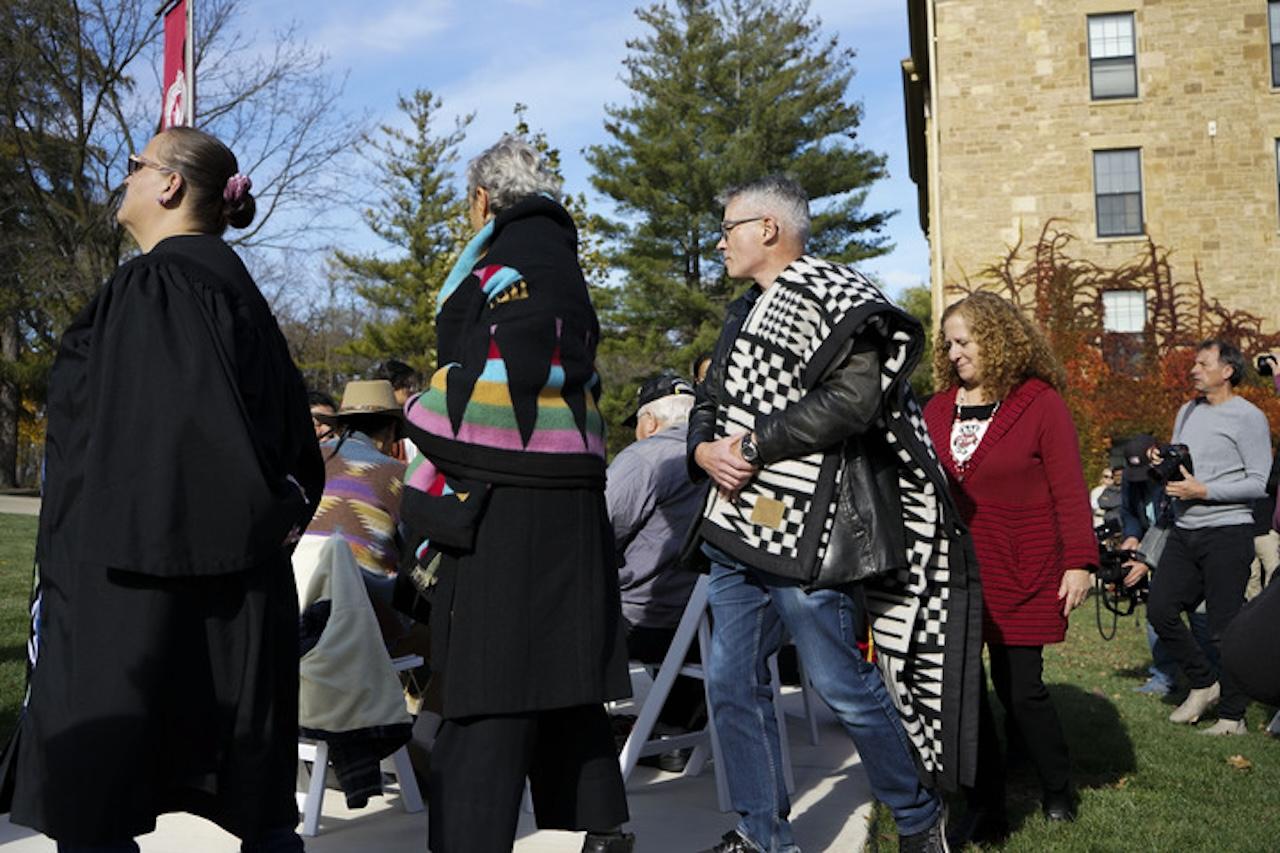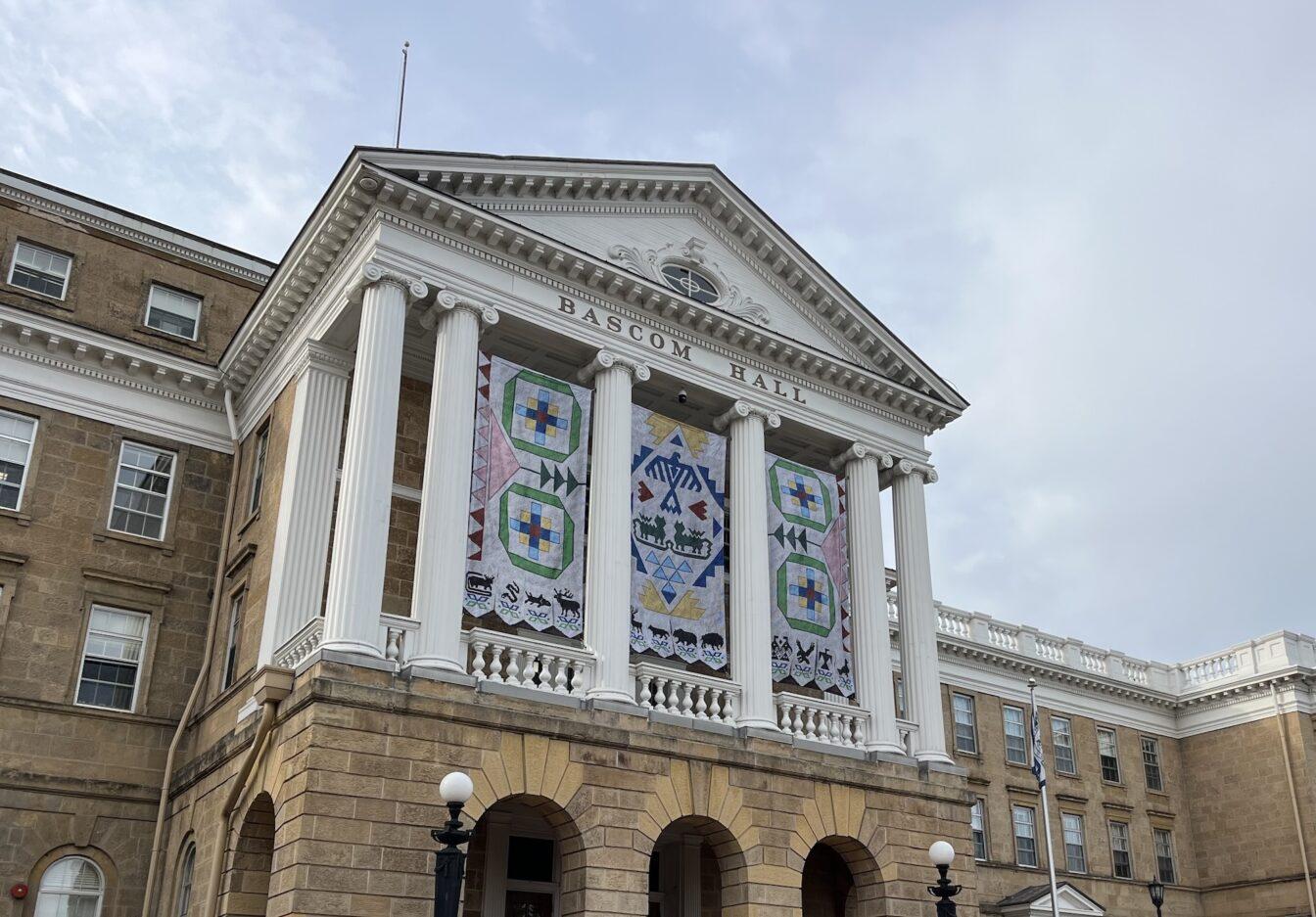The Ho-Chunk Nation and the University of Wisconsin held a celebration of Ho-Chunk banners on Bascom Hall Tuesday afternoon. UW doctoral student Molli Pauliot, UW associate professor of design studies Marianne Fairbanks and UW professor of digital arts Stephen Hilyard designed the banners as part of the Our Shared Future initiative, UW’s commitment to represent the inherent sovereignty of the H0-Chunk nation, according to the event website.
Chancellor Jennifer Mnookin’s speech addressed the process of creating the banners. Pauliot wanted create something meaningful to honor the Ho-Chunk Nation, of which she is a member, so she brought in Fairbanks to help design the textiles for the banners, Mnookin said. Hilyard then used 3D animation knowledge to create the effects of 160,000 small beads on the banners.

“The title of this piece, ‘Seed by Seed,’ reminds us of the work we are doing to acknowledge the ancestral homelands of the Ho-Chunk people, who were forcibly removed from this place,” Mnookin said. “It reminds us of our ongoing responsibility to move our campus community from ignorance to awareness. And that can’t be confined to a day, a month or even a year. It’s the work of a lifetime. But seed by seed, I am proud of the seeds we are planting, together.”
Pauliot said the banners take the form of a Ho-Chunk bandolier bag, which, often made in winter, are an important symbol of wealth and status. The banners emulate the traditional beaded and woven designs of these bags.
President of the Ho-Chunk Nation Jon Greendeer said the importance of the celebration goes beyond the physical banners. The celebration is just one small part of a larger effort for Indigenous and non-Indigenous people to coexist in the same space — so UW can host 50,000 students while still recognizing the cultural landscape that exists here, Greendeer said.
“Today is a mark of beauty, a mark of excellence for our people, not just for those who are coming by to see the beauty escapes of our beautiful campus here in Madison, but also for a lot of our Indigenous people who like to see a little bit of themselves, where they used to be, the history that we have here, the things that were we were told, the stories that have been passed along,” Greendeer said.

The center banner features a Thunderbird, which represents the Thunderbird mound on the north shore of Lake Mendota. Beneath the Thunderbird are two water spirits on top of an abstract triangle water representation. Pauliot said this imagery represents the two-tailed water spirit effigy mound on Observatory Hill.
Pauliot said the banner colors represent elements of nature — yellow for the sun, blue for the sky, green for water and red for the earth. The two outer panels represent the four lakes of Teejop and the flowers that once covered the area. The panels are green for water and the insides are red, blue and yellow to represent reflections from water. Pink on the outer panels represents the Ho-Chunk’s chief clan, while red abstractions of the letter “W” represent the university. The banners have twelve tabs on the bottom with illustrations representing each of the 12 Ho-Chunk clans, according to Pauliot.
“It is my hope that this design is used for more than just these banners, and the university’s Indigenous students refer to them for a better understanding of the Ho-Chunk people, how the Ho-Chunk people are tied to this land and today still have a presence here on campus,” Pauliot said.



